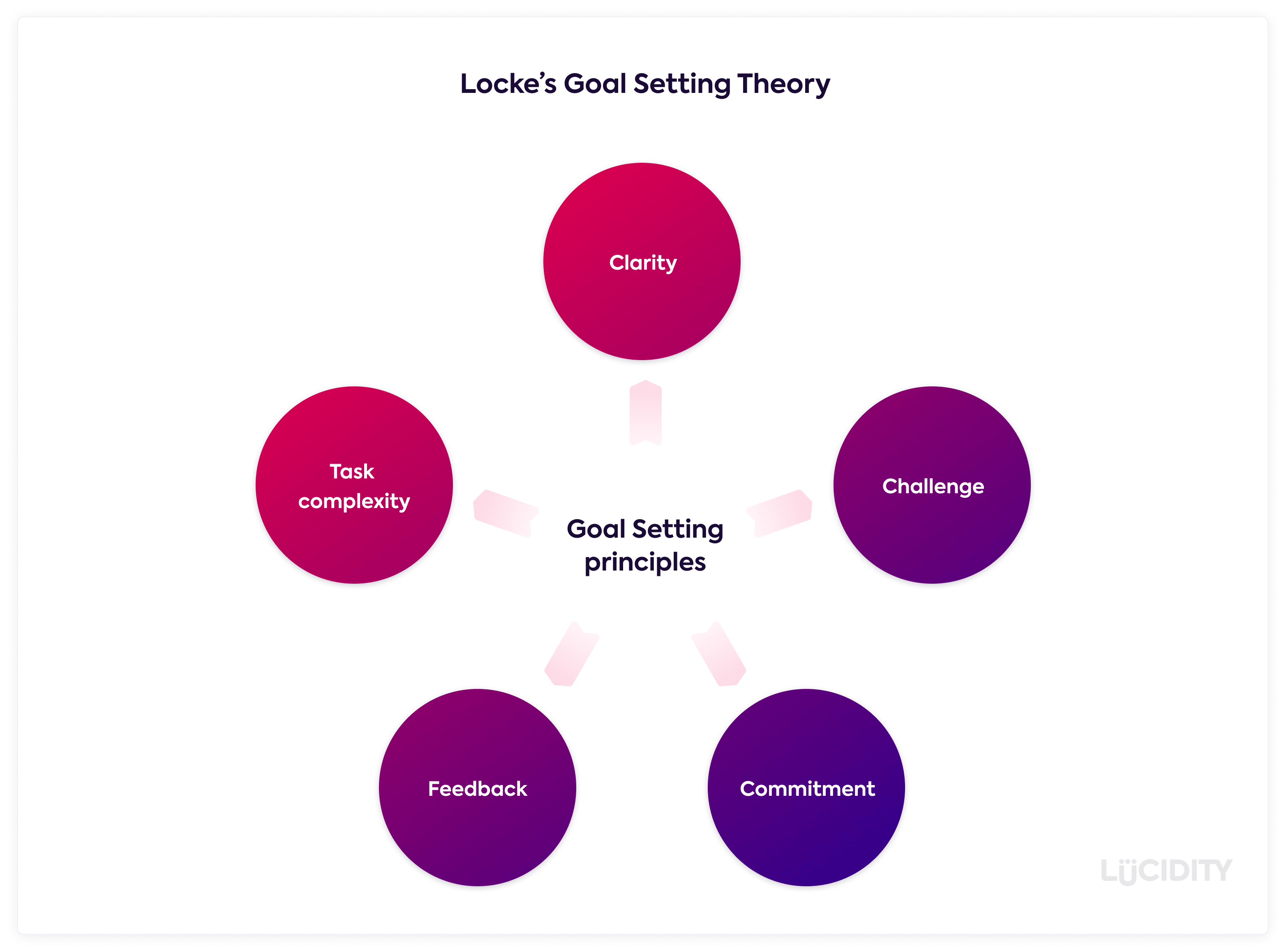Setting Goals are a vital part of any strategy, so it’s important you put some thought into what strategic goals are placed across the company. What are the goals that ultimately support your major Strategic Objectives?
There’s a lot of research over the best approach to Goal setting in order to produce great results for the company and the individual employees. Locke’s Goal Setting Theory identifies five elements that need to be in place to ensure we’re supported to best achieve the goals set…
What is Locke’s Goal Setting Theory?
Locke’s Goal Setting Theory is the link between five clear principles of Goals and the performance against that Goal. Locke’s work, and the subsequent research that was built on it, showed a better result for companies and employees if Goals adhered to the following five rules:
Clarity
Goals must be clear and specific for all
Challenging
Goals should be challenging enough to be motivating without being unrealistic
Commitment
All employees must be committed to the Goal happening
Feedback
Feedback on the Goals should be considered
Complexity
Goals must be achievable and not overwhelming
Locke’s Goal Setting Theory: Setting Clear Goals
It’s important a Goal is clear so you everyone knows what it is, how it’s measured and when it’s achieved. If you’re vague in your Goal, then it’ll be difficult to agree when the Goal is achieved and won’t be motivating for anyone…
There are some principles you can follow to ensure clear Goals:
- For measurement, try to use metrics such as numbers, booleans or percentages rather than ambiguous text
- Ensure you’re being specific – refer to the SMART principle of Goal setting
- If you’re working in a team, don’t be afraid of asking if people are clear, or asking questions if you’re not
Locke’s Goal Setting Theory: Setting Challenging Goals
Make sure Goals are both achievable but challenging. It will add to motivation and create that good feeling when you hit the Goals you’ve set! Consider the following to help you get to the point of a challenging Goal:
- What is the Goal compared to your current or previous progress?
- Is it realistic? Is it ambitious enough?
- What will the reward be when it’s hit?
- Can you generate helpful competition between members or teams?
Locke’s Goal Setting Theory: Securing Commitment To Goals
This is so important, as if you don’t have commitment you’re highly likely to not hit your potential and achieve your Goals. The whole team need to be included and onboard with the Goal, so there are some key principles to consider:
- Communicate why this Goal is important
- Make sure everyone believes it’s possible to hit the Goal
- Include teams in the Goal development, make them feel owner
- Ensure the wider strategy is shared with the team so they understand how they fit into the bigger plans for company success
- Communicate the reward for the Goal being completed
Locke’s Goal Setting Theory: Getting Feedback On Goals
This principle touches on the Commitment and Challenging principles of Goal creation, in that you need to listen to feedback and plan your Goals accordingly. This will give you valuable insight into the current wellbeing of your team, their take on the future success, and it’ll make them feel included. Consider the following:
- Include time in your plans to work through the Goals with your team
- Review your previous progress and ask for their feedback
- Capture feedback in a structured way using familiar tools or software
- If a Goal is getting a bad response consider breaking it down to smaller Goals
Locke’s Goal Setting Theory: Balancing Task Complexity
Employee mental health and wellbeing is so important, and overwhelming Goals will only reduce your ultimate performance. Take care to consider your team and their handling of different Goals to get the best outcome for all. Consider the following:
- Goals need the right amount of time to be hit
- Break larger Goals down to smaller, more manageable targets
- Don’t overwhelm a single person with all the Goals
- Keep track via progress reports and catch ups
- Provide coaches or mentors for your team
- Ask how they feel about the Goals and progress
What are the advantages of Locke’s Goal Setting Theory?
There are a number of proven advantages of this approach:
- Clarity of Goal means less confusion when the Goal is judged
- Motivation for employees is increased
- Research has suggested improved results if the principles are used
- Employee wellbeing is taken into account
What are the disadvantages of Locke’s Goal Setting Theory?
There are some areas to consider when using this framework:
- If Goals are aggressive or promote intense competition then negative behaviour can arise
- Motivation is fragile, if one or two employees are unhappy and vocal it can impact the team
- Some Goals are a challenge to define, such as “Improve Employer Branding”
- If there is a conflict between departmental Goals and company Goals there can be friction
Who invented Locke’s Goal Setting Theory?
Edwin A. Locke is the Locke in Locke’s Goal Setting, he published a paper called Toward a Theory of Task Motivation and Incentive in 1968 and followed it up with decades of work and research in this area.
His work was complemented when Dr. Gary Latham began researching practical implementations of the theory Locke had produced.
In the early 1990s, Locke and Latham came together to publish A Theory of Goal Setting & Task Performance, a book that expanded the theory.















